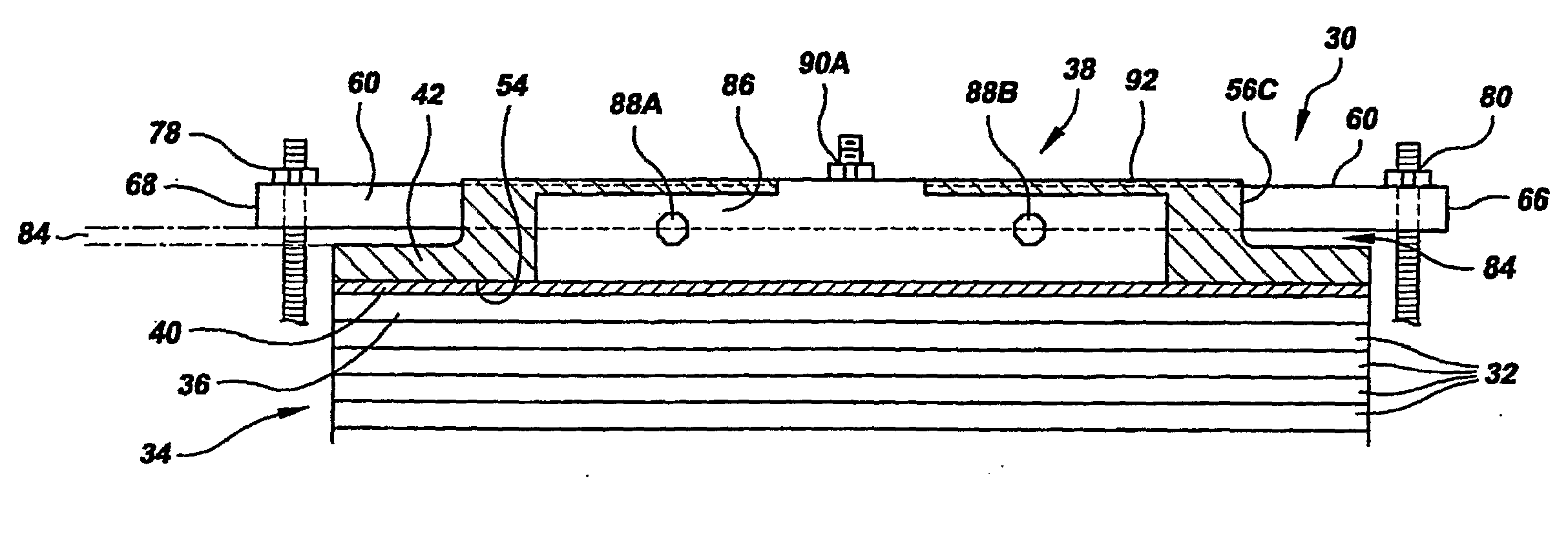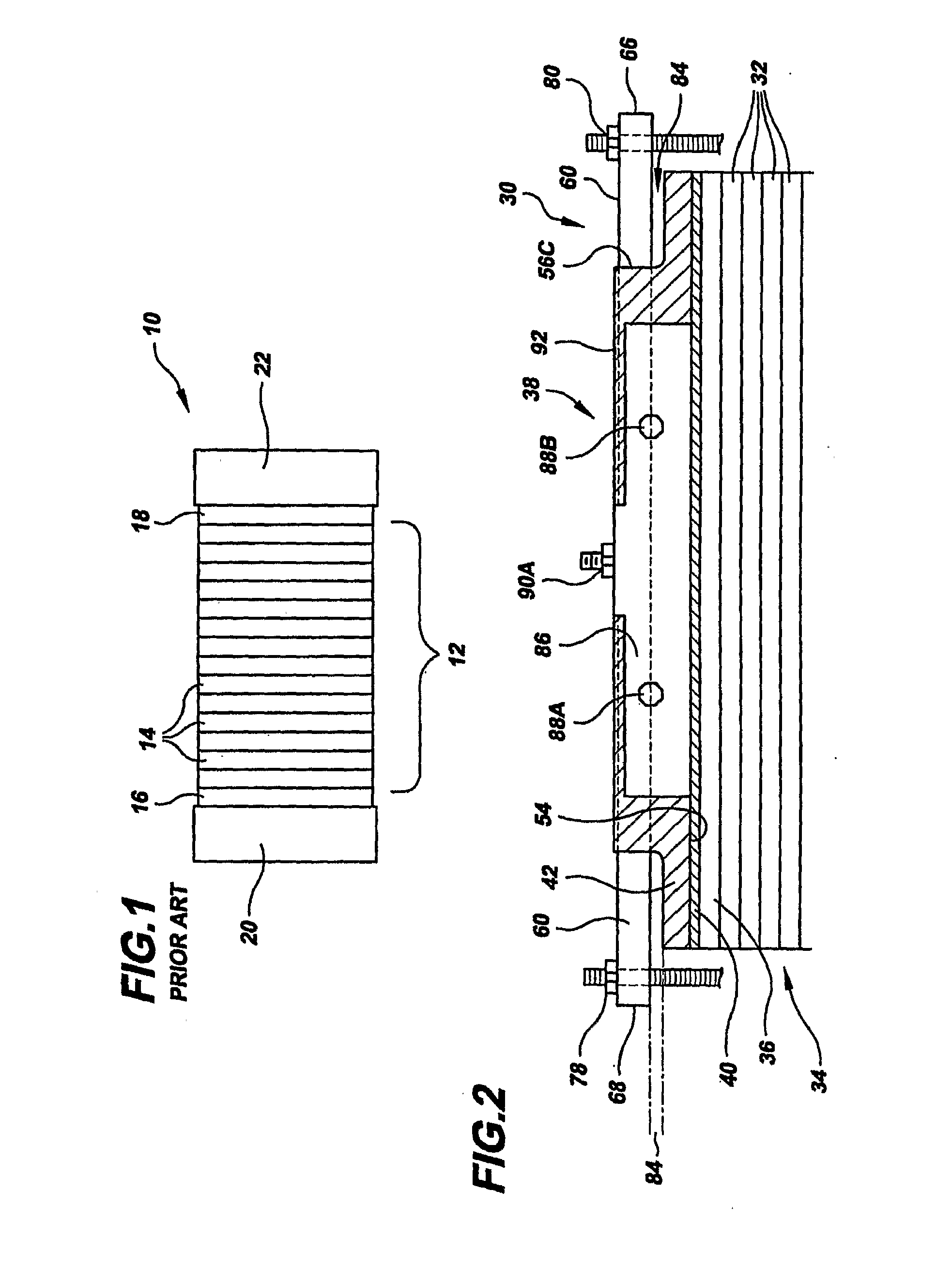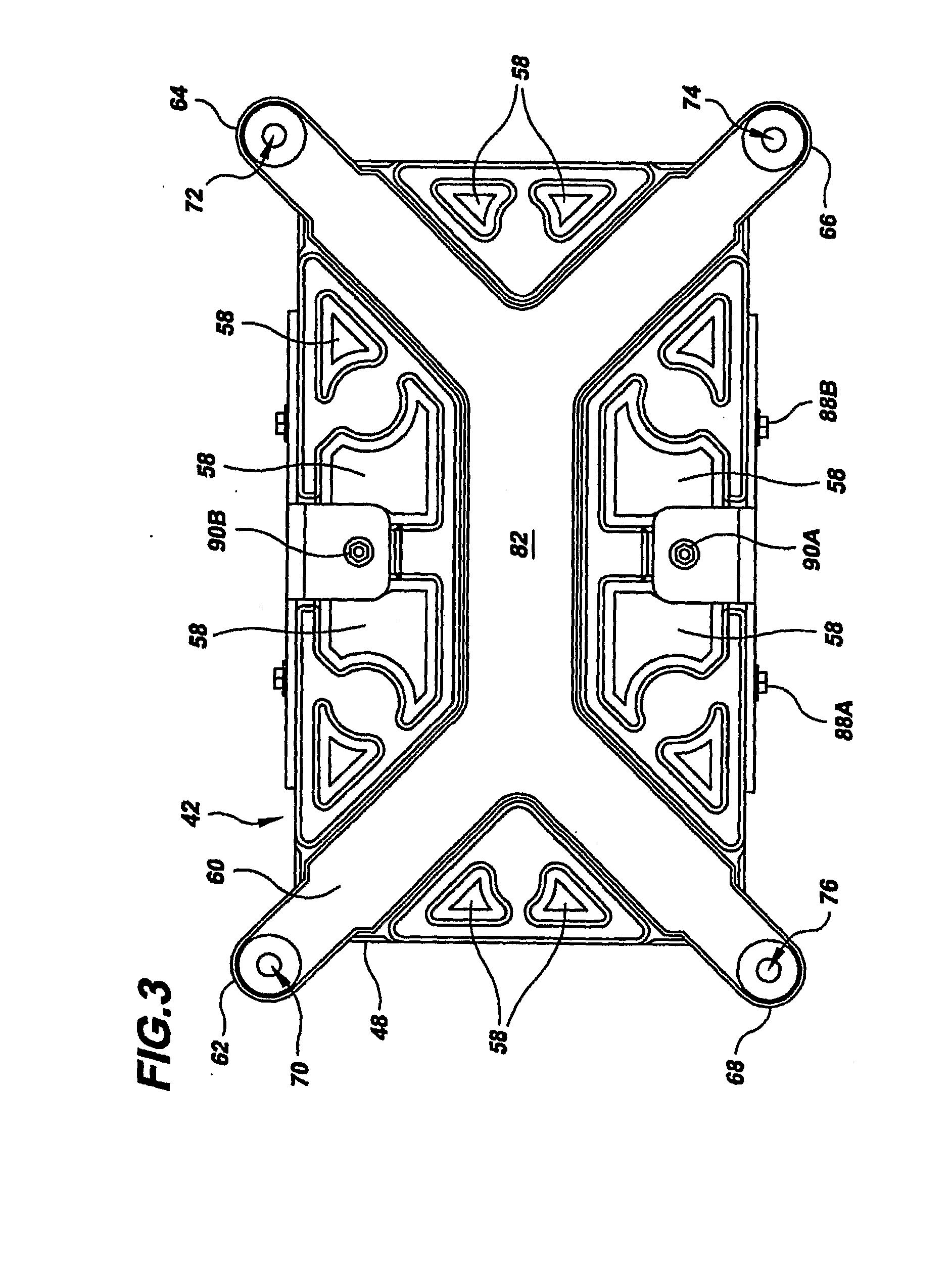Fuel cell stack having an integrated end plate assembly
- Summary
- Abstract
- Description
- Claims
- Application Information
AI Technical Summary
Benefits of technology
Problems solved by technology
Method used
Image
Examples
Embodiment Construction
[0021]Referring to the drawings in detail, a sectional view of a fuel cell stack having an integrated end plate assembly is shown in FIG. 2, and is generally designated by the reference numeral 30. The fuel cell stack 30 includes a plurality of fuel cells 32 stacked adjacent each other to form a reaction portion 34 of the fuel cell stack 30 for producing electricity from reducing fluid and process oxidant reactant streams. An end cell 36 is secured at an outer end of the reaction portion 34 of the fuel cell stack 30. The fuel cell stack 30 also includes an integrated end plate assembly 38 secured adjacent the end cell 36.
[0022]The integrated end plate assembly 38 includes an electrically conductive current collector 40 secured adjacent to and in electrical communication with the end cell 36 to direct flow of the electrical current from the fuel cells 32, 36 out of the stack 30. A pressure plate 42 is secured adjacent the current collector 40 at a surface of the current collector 40 ...
PUM
 Login to View More
Login to View More Abstract
Description
Claims
Application Information
 Login to View More
Login to View More - R&D
- Intellectual Property
- Life Sciences
- Materials
- Tech Scout
- Unparalleled Data Quality
- Higher Quality Content
- 60% Fewer Hallucinations
Browse by: Latest US Patents, China's latest patents, Technical Efficacy Thesaurus, Application Domain, Technology Topic, Popular Technical Reports.
© 2025 PatSnap. All rights reserved.Legal|Privacy policy|Modern Slavery Act Transparency Statement|Sitemap|About US| Contact US: help@patsnap.com



